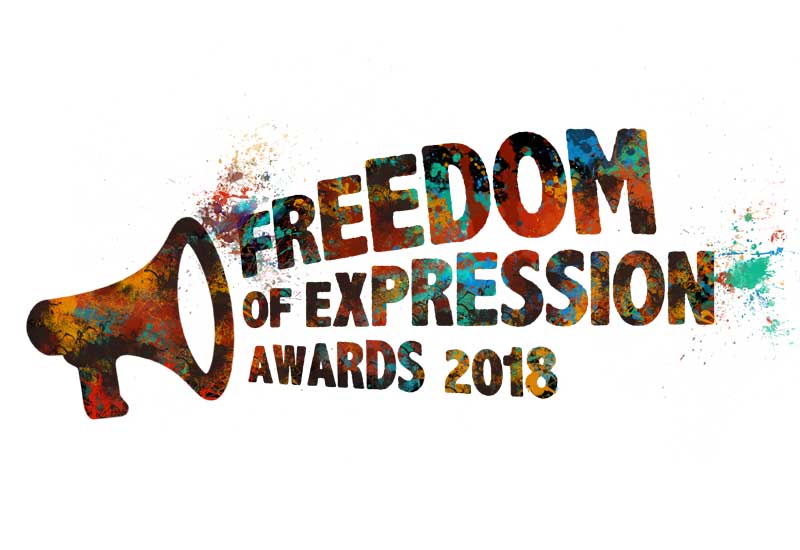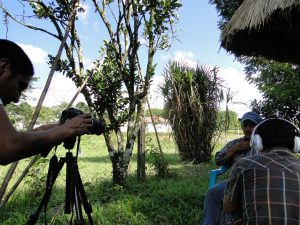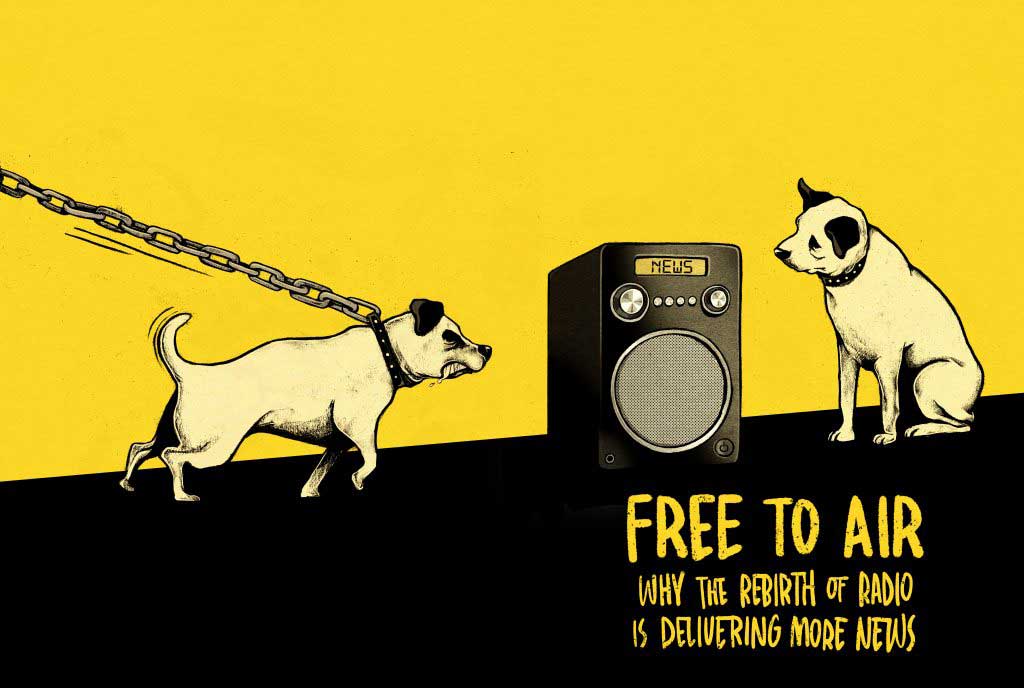Index relies entirely on the support of donors and readers to do its work.
Help us keep amplifying censored voices today.
[vc_row][vc_column][vc_video link=”https://youtu.be/jPOdNm8Sxos”][vc_column_text]Avispa Midia is an independent online magazine that prides itself on its daring use of multimedia techniques to bring alive the political, economic and social world that is Mexico and Latin America.
“As with avispas (wasps), insects that exist across the world that are equipped with various eyes or ocelli capable of distinguishing between light and dark, Avispa Media seeks to participate in and witness the variety of shades that colour reality,” said Avispa Midia. “We believe that modern-day communication should be nourished by the varied formats and technology that characterise new virtual journalism, such as integrating multimedia tools that make information more dynamic. What sets us apart is our critical, far-reaching eye, primarily through reportage and investigative journalism.”
In the Spanish version, the site’s use of pictures, videos, music and maps to illustrate its stories is particularly striking.
But the beauty of the design masks the serious intent of this collective of journalists and researchers who are seeking to challenge violence and corruption in the region and reflect the lives of marginalised and indigenous people.
They specialise in investigations into organised criminal gangs and the paramilitaries behind mining mega-projects, hydroelectric dams, and the wind and oil industry.
The Latin American world they report on is extremely violent. Between 2000 and 2016, at least 105 journalists were murdered in Mexico for carrying out their work. According to Reporters Without Borders, in 2016 Mexico became third highest country in the world for journalist killings — the most deadly outside war zones.
Avispa Midia says its work has meant that human rights organisations and NGOs have taken action on slave labour and undocumented migrants as a result of their reports.
The site however suffers from scant resources and their main challenge is to be able to establish some form of continuous financing, since they do not have a fixed budget to do their work and no one receives a salary.
Topics that Avispa Midia has addressed in the last year include: US interference in Mexico and Central America; the persecution of peasants in Honduras; land restitution demands by displaced people in Guatemala and the first visit of Mexican president Enrique Peña Nieto to the city of Oaxaca.

Many of the reports in the last 12 months have been focused on Mexico and Central America, where the media group has helped indigenous and marginalised communities report on their own stories by helping them learn to do audio and video editing.
In the future the journalists want to create a multimedia journalism school for indigenous people and young people from marginalised neighbourhoods, so that ordinary citizens can inform the world what is happening in their region, and break the stranglehold of the state and large corporations on the media.
“In a field where war has contaminated even communication, where truths but also actions are disputed, having been nominated for the Index of Censorship award lifts our courage up,” said Avispa Midia. “And it enables us to reaffirm our investment in the truth and the tenacity of the voices and experiences we carry through each word and each image documented by Avispa Midia. For us, this represents respect and appreciation for the work we have done. This means expanding the support of communities, civil organisations and academic groups that supported us against the violence exerted against journalists in Mexico.”
See the full shortlist for Index on Censorship’s Freedom of Expression Awards 2018 here.[/vc_column_text][/vc_column][/vc_row][vc_row full_width=”stretch_row_content” equal_height=”yes” el_class=”text_white” css=”.vc_custom_1490258749071{background-color: #cb3000 !important;}”][vc_column width=”1/2″][vc_custom_heading text=”Support the Index Fellowship.” font_container=”tag:p|font_size:28|text_align:center” use_theme_fonts=”yes” link=”url:https%3A%2F%2Fwww.indexoncensorship.org%2Fsupport-the-freedom-of-expression-awards%2F|||”][vc_column_text]
By donating to the Freedom of Expression Awards you help us support
individuals and groups at the forefront of tackling censorship.
[/vc_column_text][/vc_column][vc_column width=”1/2″ css=”.vc_custom_1521479845471{background-image: url(https://www.indexoncensorship.org/wp-content/uploads/2017/05/2017-awards-fellows-1460×490-2_revised.jpg?id=90090) !important;background-position: center !important;background-repeat: no-repeat !important;background-size: cover !important;}”][/vc_column][/vc_row][vc_row][vc_column][vc_basic_grid post_type=”post” max_items=”4″ element_width=”6″ grid_id=”vc_gid:1523523668709-d546d4ac-7872-3″ taxonomies=”10735″][/vc_column][/vc_row]

Free to air is the autumn 2017 edition of Index on Censorship magazine
Mexico is among the world’s most dangerous places to be a journalist, with a record number of journalists being killed in Mexico this year. We explore this in the autumn issue of Index on Censorship magazine 2017, which features two excellent articles on the dangers journalists face in the country today.
In an in-depth exclusive for Index, Duncan Tucker writes: “A record 11 journalists were murdered in 2016, and 2017 is on course to surpass that grim tally.”
Tucker says that Mexico’s drug war has brought record murder rates in 2017 and that this trend looks set to only get worse, with next year’s elections likely to cause further instability across the country.
“More than 100 Mexican journalists have been murdered since 2000 and at least 23 others have disappeared.”
“According to the Committee to Protect journalists, 95% of those killed in direct retaliation for their work are reporters for publications, which are typically in remote regions where the rule of law is undermined by rampant crime and corruption.”
“While journalists from the capital can retreat to relative safety after reporting in hazardous areas, local reporters are constantly exposed to the consequences of their work.”
Several local journalists are interviewed in the article, including Adrian Lopez, editor of a newspaper in the state of Sinaloa, who says: “We need professional help to understand and talk more about these things and the trauma that the violence could cause us.”
Alejandro Hope, a security analyst, says: “Federal authorities have failed to properly investigate and prosecute these cases.”
In the second article in the magazine to spotlight Mexico, journalist Tim MacGabhann is interviewed about his fictional book, which follows the life of a non-Mexican journalist in Mexico, who is haunted by the ghost of a colleague, a Mexican journalist. MacGabhann, who has reported from Mexico for Al Jazeera, amongst other publications, spoke of the protection foreign correspondents are afforded in the country and how this protection is not extended to Mexican journalists. The ramifications of this are becoming more visible at present.
“As foreign correspondents we depend on the work of local reporters, as fixers, to read their stories, and yet they pick up the tab,” says MacGabhann, who was visibly shocked by the growing tally of dead journalists this year when interviewed.
“NGOs can get you a panic button, one that you wear around your wrist or at home, but lots of journalists don’t use them. They’re too afraid because the person threatening you is likely to be a cop and you’re not going to call the cops about the cops.”
MacGabhann also spoke of his tremendous respect for journalists who continue to report there. Despite the violence, journalists continue to write and expose the country’s crime and corruption. They would rather be killed than stop reporting,” said MacGabhann.
For more information on the situation journalists face in Mexico and to read these articles, alongside other articles spotlighting Mexican journalists this year, please contact Rachael Jolley, editor of Index on Censorship magazine at [email protected] or Jemimah Steinfeld, deputy editor, at [email protected]
Notes:
You can order your copy here, or take out a digital subscription via Exact Editions. Copies are also available at the BFI, the Serpentine Gallery, MagCulture, (London), News from Nowhere (Liverpool), Home (Manchester) and on Amazon. Each magazine sale helps Index on Censorship continue its fight for free expression worldwide.
About Index on Censorship magazine
Index on Censorship magazine was first published in 1972 and remains the only global magazine dedicated to free expression. Since then, some of the greatest names in literature and academia have written for the magazine, including Nadine Gordimer, Mario Vargas Llosa, Amartya Sen, Samuel Beckett, as well as Arthur Miller and Harold Pinter. The magazine continues to attract great writers, passionate arguments, and expose chilling stories of censorship and violence. It is the only global free expression magazine.
Each quarterly magazine is filled with reports, analysis, photography and creative writing from around the world. Index on Censorship magazine is published four times a year by Sage, and is available in print, online and mobile/tablets (iPhone/iPad, Android, Kindle Fire)
Winner of the British Society of Magazine Editors 2016 Editor of the Year in the special interest brand category.
As the Boston Globe said, Index has bylines that Vanity Fair would kill for. “Would that bylines were the only things about Index people were willing to kill for”
One of the most experienced and respected journalists covering Mexico’s brutal drug war was murdered Monday in Sinaloa, a state plagued by narco violence. Read the full article
[vc_row][vc_column][vc_single_image image=”89329″ img_size=”full” add_caption=”yes” alignment=”center”][vc_custom_heading text=”Mexico-based journalist DUNCAN TUCKER writes in the spring 2017 issue on reporting in a country where news is not just repressed, it’s fabricated, and journalists face violent threats from police and cartels. ” google_fonts=”font_family:Libre%20Baskerville%3Aregular%2Citalic%2C700|font_style:400%20italic%3A400%3Aitalic”][/vc_column][/vc_row][vc_row][vc_column][vc_column_text]
[/vc_column_text][/vc_column][/vc_row][vc_row][vc_column][vc_column_text]
[/vc_column_text][/vc_column][/vc_row][vc_row][vc_column][vc_custom_heading text=”From the Archives”][vc_row_inner][vc_column_inner width=”1/3″][vc_single_image image=”89160″ img_size=”213×300″ alignment=”center” onclick=”custom_link” link=”http://journals.sagepub.com/doi/pdf/10.1177/0306422011399687″][vc_custom_heading text=”Narco tales” font_container=”tag:p|font_size:24|text_align:left” link=”url:http%3A%2F%2Fjournals.sagepub.com%2Fdoi%2Fpdf%2F10.1177%2F0306422011399687|||”][vc_column_text]March 2011
Bloggers and citizen journalists are telling the stories that the mainstream Mexican media no longer dares to report, says Ana Arana.[/vc_column_text][/vc_column_inner][vc_column_inner width=”1/3″][vc_single_image image=”89168″ img_size=”213×300″ alignment=”center” onclick=”custom_link” link=”http://journals.sagepub.com/doi/pdf/10.1080/03064220902734319″][vc_custom_heading text=”Wall of silence” font_container=”tag:p|font_size:24|text_align:left” link=”url:http%3A%2F%2Fjournals.sagepub.com%2Fdoi%2Fpdf%2F10.1080%2F03064220902734319|||”][vc_column_text]February 2009
Analysis of the culture of intimidation facing investigative journalists in Mexico — from attacks on reporters to criminal activity.[/vc_column_text][/vc_column_inner][vc_column_inner width=”1/3″][vc_single_image image=”94760″ img_size=”213×300″ alignment=”center” onclick=”custom_link” link=”http://journals.sagepub.com/doi/pdf/10.1080/03064227608532576″][vc_custom_heading text=”Guessing game” font_container=”tag:p|font_size:24|text_align:left” link=”url:http%3A%2F%2Fjournals.sagepub.com%2Fdoi%2Fpdf%2F10.1080%2F03064227608532576|||”][vc_column_text]April 1983
The unpredictability of Mexican government crackdown keeps the press guessing, making them careful with what they publish. [/vc_column_text][/vc_column_inner][/vc_row_inner][vc_separator][/vc_column][/vc_row][vc_row][vc_column width=”1/3″][vc_custom_heading text=”The Big Squeeze” font_container=”tag:p|font_size:24|text_align:left” link=”url:https%3A%2F%2Fwww.indexoncensorship.org%2Fmagazine|||”][vc_column_text]The spring 2017 issue of Index on Censorship magazine looks at multi-directional squeezes on freedom of speech around the world.
Also in the issue: newly translated fiction from Karim Miské, columns from Spitting Image creator Roger Law and former UK attorney general Dominic Grieve, and a special focus on Poland.[/vc_column_text][/vc_column][vc_column width=”1/3″][vc_single_image image=”88788″ img_size=”medium” alignment=”center” onclick=”custom_link” link=”https://www.indexoncensorship.org/magazine”][/vc_column][vc_column width=”1/3″][vc_custom_heading text=”Subscribe” font_container=”tag:p|font_size:24|text_align:left” link=”url:https%3A%2F%2Fwww.indexoncensorship.org%2Fsubscribe%2F|||”][vc_column_text]In print, online. In your mailbox, on your iPad.
Subscription options from £18 or just £1.49 in the App Store for a digital issue.
Every subscriber helps support Index on Censorship’s projects around the world.
![]() SUBSCRIBE NOW[/vc_column_text][/vc_column][/vc_row]
SUBSCRIBE NOW[/vc_column_text][/vc_column][/vc_row]